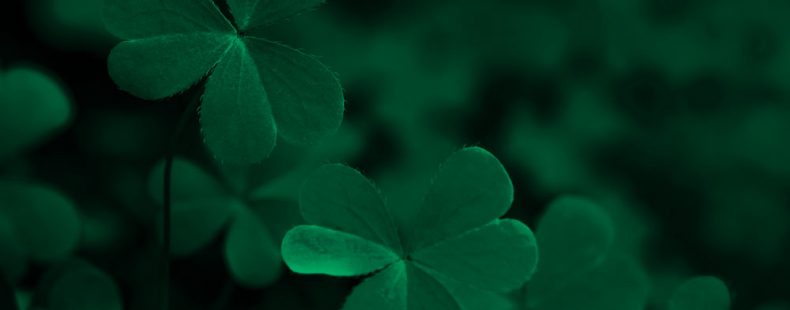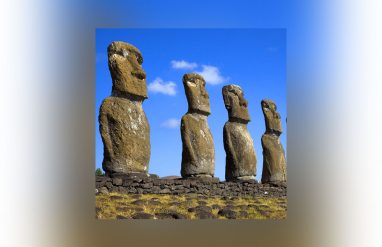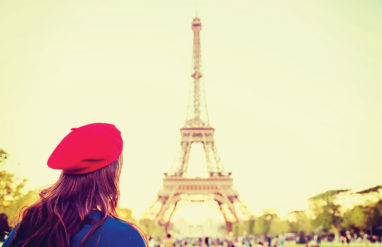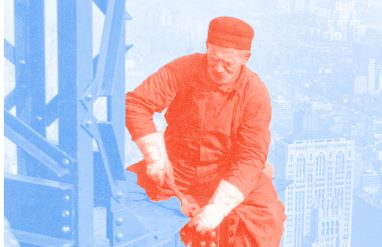Every March, people around the world celebrate St. Patrick’s Day with parades, street parties, festivals, sing-alongs, arts exhibitions, and yes, green rivers (such as the Chicago River, dyed green with what’s essentially food coloring). What began as a feast day for the patron saint of Ireland has evolved into a worldwide celebration of Irish culture and heritage—and it’s hard to resist the temptation to look for a lucky four-leaf clover come St. Patrick’s Day.
But there’s more to the day and the culture of Ireland than the color green or traditional celebrations. In honor of this special holiday, here are 18 interesting words to help you learn more about Irish history, culture, and the roots of St. Patrick’s Day.
blarney
Have you heard the one about the Blarney stone? Blarney means “flattering or wheedling talk; cajolery.” It’s often applied to insincere flattery that’s used to gain favor. The word, which was first recorded in English in the late 1700s, comes from the centuries old legend of the Blarney stone. It’s said that anyone who kisses the stone in Blarney Castle near Cork, Ireland, is given the gift of flattery and eloquence.
“Erin go Bragh”
Erin go Bragh is a popular expression of loyalty to, or affection for, Ireland, its people, and its culture. The phrase, which means “Ireland forever,” is an Anglicization of Éire go Brách, which translates to “Ireland till the end of time.” The phrase may have first come to use during the Irish Rebellion of 1798 as a rallying cry for Irish independence. In the time since, it’s been used in music, sports, and during celebrations like St. Patrick’s Day to celebrate Irish pride and culture.
leprechaun
Leprechauns originated in Irish folklore, but they’ve become a famous symbol all over the world. A leprechaun is a dwarf or sprite, often depicted as “a little old man who will reveal the location of a hidden crock of gold to anyone who catches him.” Though leprechauns are usually seen as joyful or mischievous, some representations of leprechauns feature offensive stereotypes that should be avoided. For example, the University of Notre Dame’s “fighting Irish” leprechaun has been voted one of the most offensive mascots in US sports.
banshee
Leprechauns aren’t the only well-known figures from folklore. In Irish legend, a banshee is “a spirit in the form of a wailing woman who appears to or is heard by members of a family as a sign that one of them is about to die.” The word comes from the Irish Gaelic bean sídh, which translates to “woman of the fairy mound.” In legends, banshees most often appear at night, and some believe they can only be seen by those of Irish descent.
Saint Patrick
Although the origin of St. Patrick’s Day is a mix of fact and legend, Saint Patrick was a real person. The day commemorates the feast of Saint Patrick, a British-born missionary and bishop who became the patron saint of Ireland. Saint Patrick is believed to have been born Maewyn Succat, and later chose the Latin name Patricius, or Patrick in English and Pádraig in Irish. He is credited with bringing Christianity to Ireland and famously believed to have used the shamrock as a metaphor for the Holy Trinity.
Emerald Isle
Ireland is sometimes called the Emerald Isle. This poetic nickname for Ireland stems from the lush, green land and rolling hills that make up many parts of the country. Emerald green is a “clear, deep green color” most often associated with the gem of the same name. Green is strongly associated with Ireland not only because of the landscape and symbols like the shamrock, but also because of its use among people fighting for Irish independence throughout history.
How many shades of green do you know? Discover more here.
luck
If you’ve ever searched for a four leaf clover, then you know a little something about the supposed link between Irish culture and luck. Luck is “the force that seems to operate for good or ill in a person’s life,” and many people believe Irish symbols, particularly those seen on St. Patrick’s Day, have a special ability to attract good luck. Maybe you’ve heard the phrase the luck of the Irish? This phrase is considered a cliché and is mostly only used in the US, but it’s an example of just how common it is to think Irish culture is imbued with potent powers of good luck. (Need a few more serendipitous ways to say lucky?)
Gaelic
You’ll notice many of the words on this list have Gaelic roots. Gaelic isn’t only one language. The term encompasses Celtic languages that include the speech of ancient Ireland and more modern dialects that have developed from it, especially Irish, Manx, and Scottish Gaelic. Though the term Irish Gaelic is sometimes used outside of Ireland, Irish is made up of distinct dialects that vary in vocabulary, pronunciation, and grammar, and the words Gaelic and Irish shouldn’t be used interchangeably.
shamrock
Shamrocks are among the most famous symbols of St. Patrick’s Day. The word shamrock can describe a number of trifoliate, or three-leafed, plants but especially “a small, yellow-flowered clover: the national emblem of Ireland.” Shamrock comes from the Irish Gaelic seamrōg, or “clover.” Saint Patrick’s close association with Ireland and legendary use of the shamrock as a symbol for Christianity helped make it a symbol of Irish culture. These days, shamrocks are so popular there is even a Shamrock emoji.
donnybrook
In English, donnybrook means ”an inordinately wild fight or contentious dispute; brawl; free-for-all.” It comes from Donnybrook Fair, a traditional fair that was held in Donnybrook, county Dublin, Ireland, until 1855. The fair featured livestock and produce and later evolved into a carnival. It was ultimately shut down due to its reputation for brawls and raucous behavior. The word donnybrook entered English in the mid-1800s. Fun fact: the Donnybrook Fair grounds are now the Donnybrook Rugby Ground.
bodhran
Music is a big part of many St. Patrick’s Day celebrations, and some of it includes the bodhran. A bodhran is “a handheld, shallow Irish drum with a single goatskin head, played with a stick.” It’s often used in traditional Celtic folk music, and it’s known for its deep, distinct sound. Bodhran is borrowed in English from the Irish bodhrán, which derives from the middle Irish bodar, meaning “deafening, deaf.”
Celtic
The Celts were once the largest group in ancient Europe, and their influence on the language and culture remains prominent today, especially in Ireland. Celtic is a term for the family of languages that includes Irish, Scottish Gaelic, Welsh, and Breton. More broadly, Celtic refers to anything “of the Celts or their language.”
limerick
A limerick is “a kind of humorous verse of five lines.” It’s also a county in Ireland, and the two share an interesting link. The first known use of limerick referring to the poem comes from the late 1800s, and the word is thought to have originated as a part of a party game. People playing the game took turns making up nonsense verses, then everyone would sing the refrain: “Will you come up to Limerick?” The refrain referenced Limerick, the place, but later came to represent the poems themselves.
Brush up on different poetic terms here.
clover
It’s said that if you find a four-leaf clover, it will bring you good luck. So, is a clover the same thing as a shamrock? It’s complicated. Clover and shamrock are both used to describe plants from similar species. While shamrock derives from an Irish word, clover has roots in Old English. Clovers may have two, three, four, or more leaves, while the traditional shamrock that’s used as a symbol of Ireland has three. In other words, shamrocks are a type of clover, but not every clover is a shamrock.
balbriggan
There are many things that take their names from places in Ireland. Balbriggan is one. In addition to being a city in Ireland, balbriggan is “a plain-knit cotton fabric, used especially in hosiery and underwear.” The fabric was first made in the town of the same name, and the word has been in use in English since the mid-1800s.
shillelagh
A shillelagh is a cudgel, or club, traditionally made of blackthorn or oak, and it’s become a recognizable symbol of Irish culture in some St. Patrick’s Day celebrations. The name shillelagh comes from the Irish Síol Éiligh, the name of a town in County Wicklow, Ireland. The adjoining forest once provided the wood for the clubs, which are now sometimes carried in parades or sold as souvenirs.
brogue
Let’s hear it for the brogue. A brogue is “an Irish accent in the pronunciation of English.” Believe it or not, this term may be related to shoes. The word brogue can also refer to “a coarse, usually untanned leather shoe once worn in Ireland and Scotland.” It’s thought that brogue in reference to accents may be a special use of the word; it was first recorded in English in the early 1700s.
rainbow
Rainbows are often associated with Ireland and St. Patrick’s Day. Some legends say leprechauns leave gold at the ends of rainbows. There may also be a scientific explanation for Ireland’s close association with rainbows. A rainbow is an “arc of prismatic colors appearing in the heavens opposite the sun and caused by the refraction and reflection of the sun’s rays in drops of rain.” Because of its rainy climate and latitude, Ireland may actually have better conditions for the formation of frequent rainbows than other places.
Take the quiz
Now that you’ve crossed the rainbow and read through this list, you can revisit it any time by checking out our word list on these St. Patrick’s Day words. Then discover if you have the luck of the Irish (or at least an excellent memory!) by taking our quiz.














